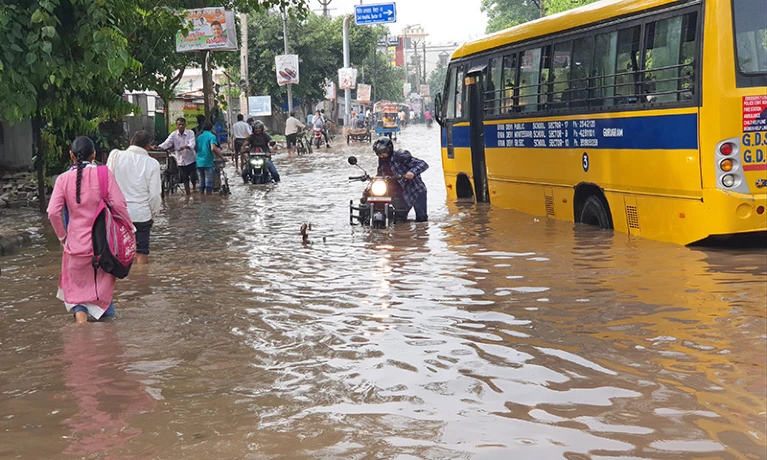
A climate assessment report published in November 2022 by the Centre for Science and Environment, a public-interest research and advocacy organization based in New Delhi, analysed the first nine months of 2022. It found that India experienced extreme weather events, ranging from heatwaves to cyclones, for 88% of that time period. These disasters claimed 2,755 lives, affected 1.8 million hectares of crops, destroyed around 400,000 homes and killed almost 70,000 livestock.
“This is the watermark of climate change,” the report states. “It is not about the single event but about the increased frequency of the events — an extreme event we saw once every 100 years has now begun to occur every five years or less. Worse, it is now all coming together — each month is breaking a new record. This in turn is breaking the backs of the poorest who are worst impacted and are fast losing their capacities to cope with these repeated and frequent events.”
March 2022, for example, was the hottest March on the subcontinent since records began in 1901, with temperatures of more than 40 °C combined with a drought as rainfall slowed to about one-third of normal rates. The two placed enormous stress on agriculture, with some regions experiencing a 30% reduction in their harvests, forcing the country to restrict its wheat exports. The increased demand on the electricity grid, partly caused by the increased use of air-conditioning units, caused the worst electricity shortage in more than six years. At least two states, Tripura in the northeast and West Bengal in the east, ordered schools to close. The extreme temperatures led to the deaths of at least 90 people.
Heatwaves often have cascading effects on other hazards, leading to wildfires that destroy crops and release dangerous smoke, as well as accelerating the spread of infectious diseases and causing death. They can also lead to water shortages. Warmer air can hold more moisture, leading to lengthy dry periods before all that moisture gets dumped in a matter of days or even hours.
Part of the problem is that India is positioned between the melting Himalayas and three rapidly warming bodies of water. The Arabian Sea warmed by 2 °C from 1982 to 2019, pumping moisture into northwest India. But the mountains squeeze the moisture from these damp winds as if they were a sponge, dumping rain and causing floods and landslides. The temperature of the sea now hovers at around 28 °C, which is warm enough for cyclones to form. A 2021 study shows that there has been a 50% increase in the number of cyclones in the past 40 years from the Arabian Sea.
To make matters worse, those cyclones now intensify rapidly, strengthening to dangerous storms in a matter of hours. Cyclone Amphan, for example, which caused widespread damage in eastern India in May 2020, initially had wind speeds of 140 kilometres per hour but quickly strengthened to 215 kilometres per hour, switching from a category 1 cyclone to a category 4 cyclone in less than a day.
There is “one extreme weather event after another — whether it’s the monsoon or the tropical cyclones”, says Roxy Mathew Koll, an oceanographer at the Indian Institute of Tropical Meteorology in Pune.
Mumbai is particularly vulnerable, Koll says. It is already one of the most populous cities in the world and its population is likely to double to around 40 million by 2050. By that time, climate projections suggest a global temperature increase of 2 °C, causing worse monsoons, cyclones, storm surges, heatwaves and increased humidity in the city. “The impact at that time is unimaginable, even for climate scientists like me,” he says.